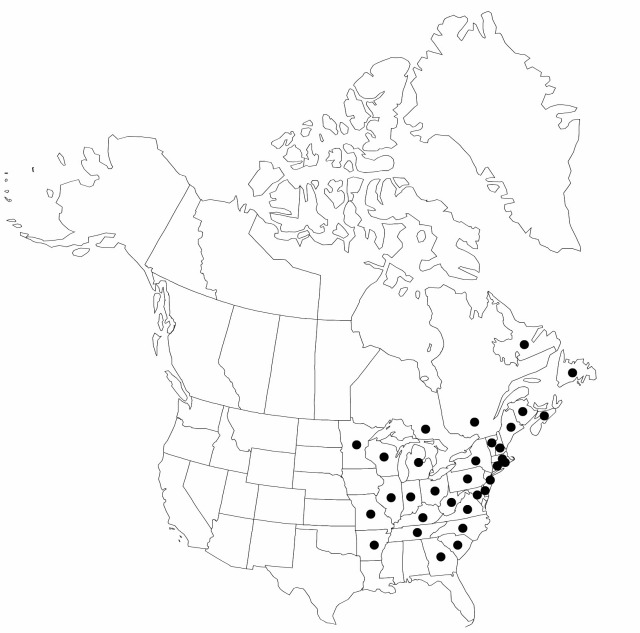Difference between revisions of "Carex communis"
Mem. Torrey Bot. Club 1: 41. 1889.
FNA>Volume Importer |
FNA>Volume Importer |
||
| Line 43: | Line 43: | ||
-->{{#Taxon: | -->{{#Taxon: | ||
name=Carex communis | name=Carex communis | ||
| − | |||
|authority=L. H. Bailey | |authority=L. H. Bailey | ||
|rank=species | |rank=species | ||
| Line 55: | Line 54: | ||
|publication year=1889 | |publication year=1889 | ||
|special status= | |special status= | ||
| − | |source xml=https://jpend@bitbucket.org/aafc-mbb/fna-data-curation.git/src/ | + | |source xml=https://jpend@bitbucket.org/aafc-mbb/fna-data-curation.git/src/f50eec43f223ca0e34566be0b046453a0960e173/coarse_grained_fna_xml/V23/V23_1014.xml |
|genus=Carex | |genus=Carex | ||
|section=Carex sect. Acrocystis | |section=Carex sect. Acrocystis | ||
Revision as of 20:04, 16 December 2019
Plants densely cespitose; rhizomes ascending, reddish brown to purplish brown, 0–3 mm, stout or absent. Culms 20–60 cm, scabrous distally; bases (remnants of old leaves) slightly or not fibrous. Leaf blades green, 1.8–5 mm wide, widest leaves 3+ mm wide, herbaceous, papillose to scabrous abaxially, papillose to scabrous adaxially. Inflorescences usually with both staminate and pistillate spikes, rarely only pistillate; peduncle of staminate spike 0.7–9.7 mm; proximal nonbasal bracts leaflike, usually shorter than inflorescences. Spikes: proximal pistillate spikes 2–3 (basal spike 0); cauline spikes usually clearly separated, with 3–10 perigynia; staminate spikes 3.1–15.5 × 1–2.5 mm. Scales: pistillate scales pale brown to dark reddish brown, often with broad white margins, ovate to lanceolate, 2.5–4.8 × 1.2–2 mm, shorter than to exceeding perigynia, apex obtuse to acuminate or short-awned; staminate scales elliptic to obovate, 3.1–5.2 × 0.7–2.2 mm, apex obtuse to acuminate or short-aristate. Anthers 1.8–3 mm. Perigynia pale green, veinless, globose to obovoid, 2.7–3.8 × 1.2–2.6 mm, as long as wide; beak usually straight, occasionally slightly bent, pale green, 0.5–2.3 mm, weakly ciliate-serrulate, apical teeth 0.1–0.5 mm. Stigmas 3. Achenes pale brown, globose to obovoid, round to obtusely trigonous in cross section, 1.4–2.3 × 1–1.4 mm.
Distribution

North America.
Discussion
Varieties 2 (2 in the flora).
Selected References
None.
Key
| 1 | Apical teeth of perigynium beak usually 0.1–0.2(–0.3) mm; pistillate scales usually 1.6 mm wide or less. | Carex communis var. communis |
| 1 | Apical teeth of perigynium beak usually more than 0.2 mm; pistillate scales usually more than 1.6 mm wide. | Carex communis var. amplisquama |